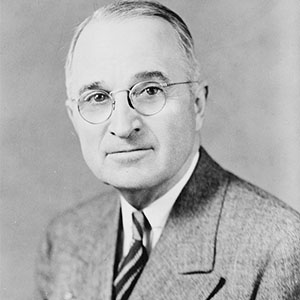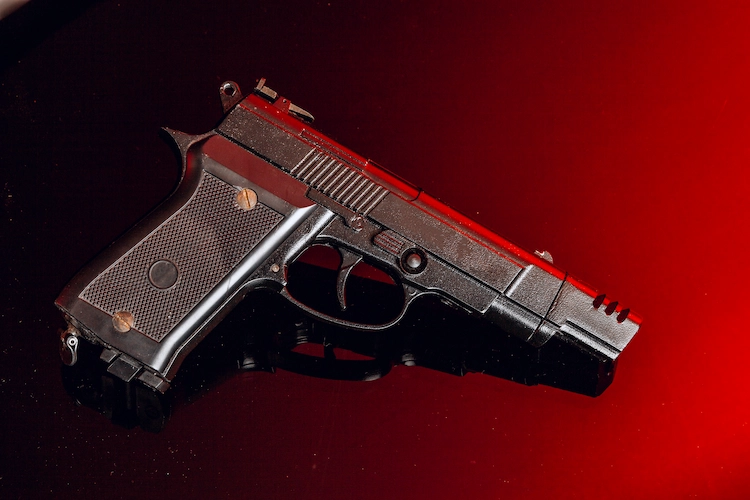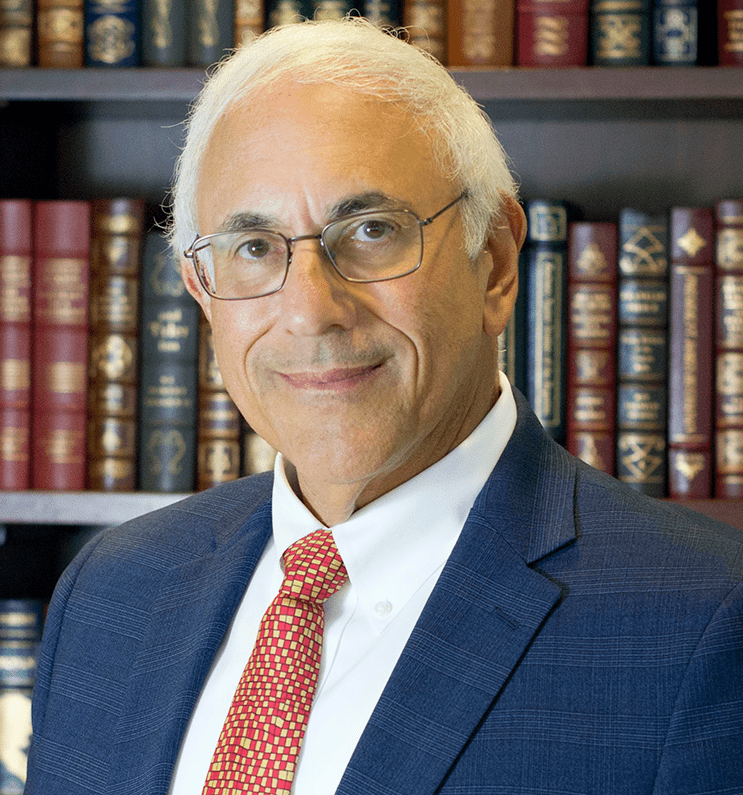Harry S Truman served as the 33rd President of the United States. He assumed the office following the death of President Franklin D. Roosevelt. In the early days of his administration, he dropped the atomic bomb on Japan, effectively ending World War II.
Early Life and Entry into Politics
Harry S. Truman was born in Lamar, Missouri in 1884. He did not attend college and worked on his family farm before joining the National Guard during World War I. He saw combat action in France as a captain in the Field Artillery. When the war ended, he married his high school sweetheart, Elizabeth Virginia Wallace, and opened a hat shop in Kansas City.
Truman first entered public office as a county judge. In 1934, Truman was elected to the U.S. Senate. In his first term, he served on the Senate Appropriations Committee, which was tasked with funding President Roosevelt’s New Deal projects. Truman was also appointed to the Interstate Commerce Committee, which oversaw railroads, shipping, and interstate transport. He gained national recognition for leading a Senate committee convened to investigate waste and corruption in federal defense contracts.
Vice Presidency
Entering the 1944 presidential election, Democratic party leaders were eager for President Roosevelt to select a new running mate. Truman’s popularity and integrity made him a popular choice, and he ultimately accepted the party’s nomination. Truman’s tenure as Vice President lasted just 82 days. Following the sudden death of FDR, Truman was sworn in as president on April 12, 1945.
Presidency
President Truman was immediately thrust into a number of critical situations. In his first six months in office, he announced victory over the Germans and dropped atomic bombs on Hiroshima and Nagasaki, Japan. He also signed the charter ratifying the United Nations.
Although he had little foreign policy experience, he was able to persuade Congress to approve the Truman Doctrine in 1947, which adopted a policy of containment to address the growing threat of Russian Communism. He also secured $13 billion to rebuild Western Europe, which became known as the Marshall Plan.
Truman was reelected in 1948 in a surprising come from behind victory. Once reaching the Oval Office in his own right, Truman proposed a 21-point program that called for the expansion of Social Security, the creation of a full-employment program, a permanent Fair Employment Practices Act, and public housing and slum clearance. According to Truman, the program, which became known as the Fair Deal, “symbolizes for me my assumption of the office of President in my own right.”
When the Communist government of North Korea attacked South Korea in 1950, Truman quickly committed U.S. troops to the conflict. However, the involvement of the Chinese forced the U.S. to abandon its goal of defeating communism in Korea and adopt strategy of containment. When General Douglas MacArthur publicly disagreed with him, Truman fired him for insubordination, which proved to be highly unpopular with the American people.
President Truman also faced challenges on the home front, including a growing labor dispute between the United Steel Workers of America and the county’s largest steel mills. After being unable to facilitate an end to the standoff, Truman ordered the federal government to seize the mills. The action was later ruled unconstitutional by the U.S. Supreme Court in Youngstown Sheet & Tube Company v. Sawyer.
Facing dismal approval ratings, Truman decided that he would not run for reelection in 1952. He died at the age of 88 in 1972.









